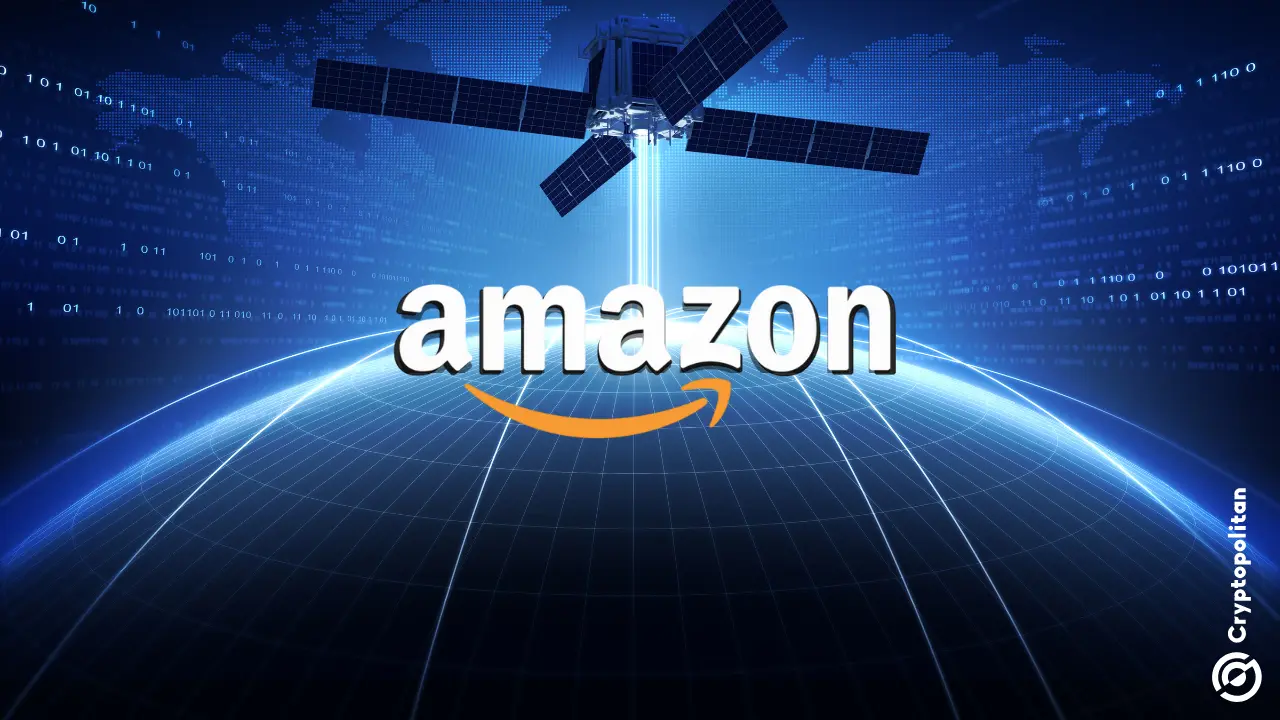Amazon launched its second batch of Kuiper internet satellites using the Atlas V rocket by United Launch Alliance (ULA). The rocket lifted from Space Launch Complex 41 at the Kennedy Space Center in Cape Canaveral, Florida. The cloud service parent company is ramping up plans for a massive constellation that competes with Elon Musk’s Starlink.
According to a live stream record, ULA launched the satellites into space today at 6.54:30 a.m. EDT. Project Kuiper represents Amazon’s low-Earth orbit (LEO) satellite broadband communication network. The project aims to deliver fast, reliable internet to customers worldwide, including those in underserved communities, using a constellation of more than 3,200 LEO satellites.
Amazon partners with ULA to launch the majority of the Kuiper constellation
Today’s launch marked the 2nd of 46 planned recurring missions for Project Kuiper. Amazon is partnering with ULA to launch most of the Kuiper constellation using eight Atlas V and 38 Vulcan rockets, dubbed the largest commercial launch services agreement in history. The project Kuiper plans to launch more than 3200 advanced LEO satellites to provide reliable and fast internet worldwide. According to ULA updates, the system can serve many customers, from individual households to schools, hospitals, businesses, government agencies, and other organizations that operate in places with unreliable connectivity.
📸 Atlas V rises with the sun this morning to successfully deliver the second grouping of operational broadband satellites for Amazon’s Project Kuiper constellation.
Launch photo album: https://t.co/VZachAUGIG pic.twitter.com/4btiuVLF37
— ULA (@ulalaunch) June 23, 2025
In the live stream, Ben Chilton, an ordnance engineer at ULA, said that the launch continues a new Low-Earth Orbit satellite connectivity chapter. The launch had been rescheduled twice before, citing inclement weather and a problem with the rocket booster. Amazon has already booked over 80 launches with several providers, including SpaceX, Jeff Bezos’ Blue Origin, and European launch provider Arianespace, to deliver Kuiper satellites into orbit.
Project Kuiper was unveiled six years ago with plans to build a constellation of internet-beaming satellites in low Earth orbit. The project aims to compete directly with Starlink, Elon Musk’s project, which currently dominates the market with 8,000 satellites in orbit. Starlink has already launched 55 Starlink missions this year alone.
In April, the cloud computing parent company sent 27 Kuiper internet satellites into LEO, a region of space within 1,200 miles of Earth’s surface. The project has deployed 54 crafts in orbit in a planned constellation of 3236 satellites. Amazon must meet the Federal Communications Commission deadline to launch half of its total constellation, i.e., 1618 satellites, by July 2026.
Broadband connectivity in LEO satellites is becoming a trend
Amazon is expected to publicly announce its initial contact with all satellites from its mission operation center in Redmond, Washington, today or later. The company revealed that it may begin delivering customer service later this year if all goes well. Amazon revealed in a 2020 FCC filing that it could begin service in the northern and some parts of the southern region at 578 satellites, with coverage expanding towards the Earth’s equator
Tory Bruno, ULA CEO, said that the company could launch up to five more Kuiper missions this year. The first two Kuiper satellite prototypes were launched in 2023, gaining experience in the creation of serial units that form the system’s backbone. The prototypes were covered in a dielectric mirror film that scatters reflected sunlight, making them less visible to astronomers who are opposed to the rapidly growing constellations of low Earth orbit, citing that they interfere with observation.
China has not been left behind in broadband connectivity projects in LEO. Guwong and Qianfan recently launched spacecraft for two different mega constellations, both of which will feature more than 10,000 satellites. China’s top priority is supporting state-sponsored Guwong’s proliferated LEO constellation. China has conducted four launches carrying 34 Guwong satellites since December 2024. Guwong plans to launch 12,992 satellites, with 6,080 in an extremely low orbit of 500 to 600 km, while the rest will orbit at 1,145 km.
Cryptopolitan Academy: Tired of market swings? Learn how DeFi can help you build steady passive income. Register Now
This articles is written by : Nermeen Nabil Khear Abdelmalak
All rights reserved to : USAGOLDMIES . www.usagoldmines.com
You can Enjoy surfing our website categories and read more content in many fields you may like .
Why USAGoldMines ?
USAGoldMines is a comprehensive website offering the latest in financial, crypto, and technical news. With specialized sections for each category, it provides readers with up-to-date market insights, investment trends, and technological advancements, making it a valuable resource for investors and enthusiasts in the fast-paced financial world.
